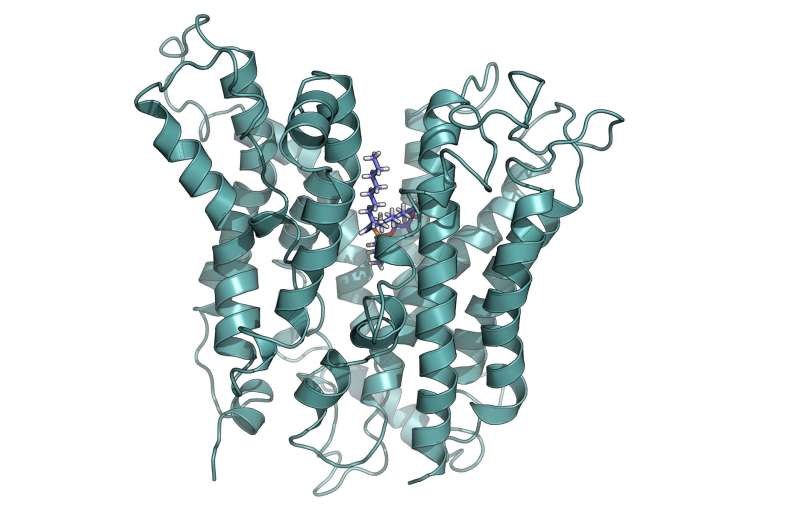Scientists harness nature's transport system to the brain

Scientists from Duke-NUS Medical School (Duke-NUS) have derived a structural model of a transporter at the blood-brain barrier called Mfsd2a (1). This is the first molecular model of this critical transporter, and could prove important for the development of therapeutic agents that need to be delivered to the brain —- across the blood-brain barrier. In future, this could help treat neurological disorders such as glioblastoma.
Currently, there are limitations to drug delivery to the brain as it is tightly protected by the blood-brain barrier. The blood-brain barrier is a protective barrier that separates the circulating blood from the central nervous system which can prevent the entry of certain toxins and drugs to the brain. This restricts the treatment of many brain diseases. However, as a transporter at the blood-brain barrier, Mfsd2a is a potential conduit for drug delivery directly to the brain, thus bypassing the barrier.
In this study, recently published in the Journal of Biological Chemistry, first author Duke-NUS MD/PhD student Debra Quek and senior author Professor David Silver used molecular modeling and biochemical analyses of altered Mfsd2a transporters to derive a structural model of human Mfsd2a. Importantly, the work identifies new binding features of the transporter, providing insight into the transport mechanism of Mfsd2a.
"Our study provides the first glimpse into what Mfsd2a looks like and how it might transport essential lipids across the blood-brain barrier," said Ms Quek. "It also facilitates a structure-guided search and design of scaffolds for drug delivery to the brain via Mfsd2a, or of drugs that can be directly transported by Mfsd2a."
Currently this information is being used by Duke-NUS researchers to design novel therapeutic agents for direct drug delivery across the blood brain barrier for the treatment of neurological diseases. This initiative by the Centre for Technology and Development (CTeD) at Duke-NUS, is one of many collaborative research efforts aimed at translating Duke-NUS' research findings into tangible commercial and therapeutic applications for patients.
Ms Quek plans to further validate her findings by purifying the Mfsd2a protein in order to further dissect how it functions as a transporter.
More information: Debra Q.Y. Quek et al, Structural insights into the transport mechanism of the human sodium-dependent lysophosphatidylcholine transporter Mfsd2a, Journal of Biological Chemistry (2016). DOI: 10.1074/jbc.M116.721035
(1) A 2014 study by Duke-NUS Professor David Silver identified Mfsd2a as the first ever transporter of sodium-dependent lysophosphatidylcholine (LPC) across the blood-brain barrier. Separate studies in 2015, also led by Dr Silver, confirmed that loss of function mutations in human Mfsd2a resulted in severe microcephaly. This research indicated that LPCs are critical for brain growth and function.
Journal information: Journal of Biological Chemistry
Provided by Duke-NUS Medical School

















